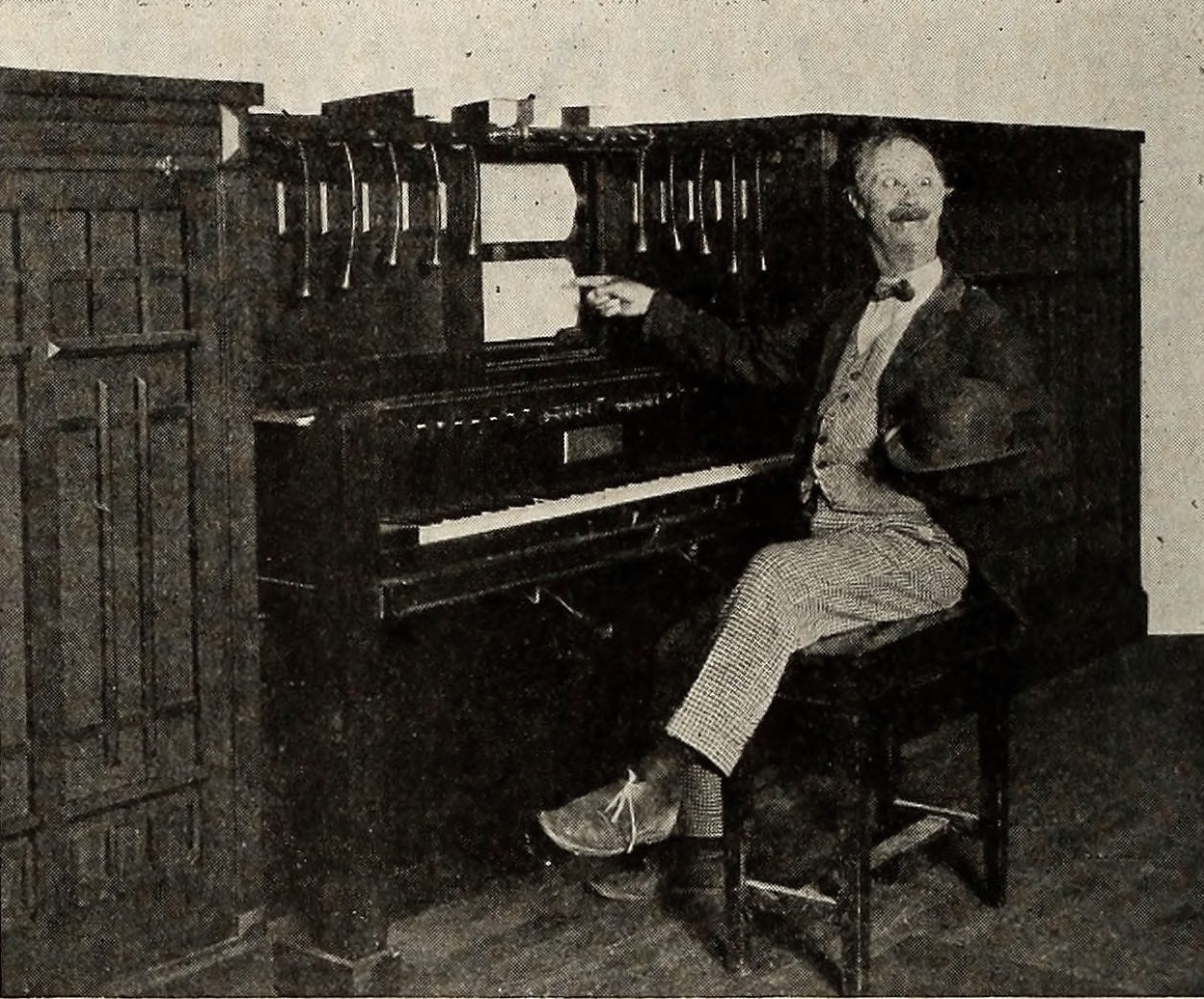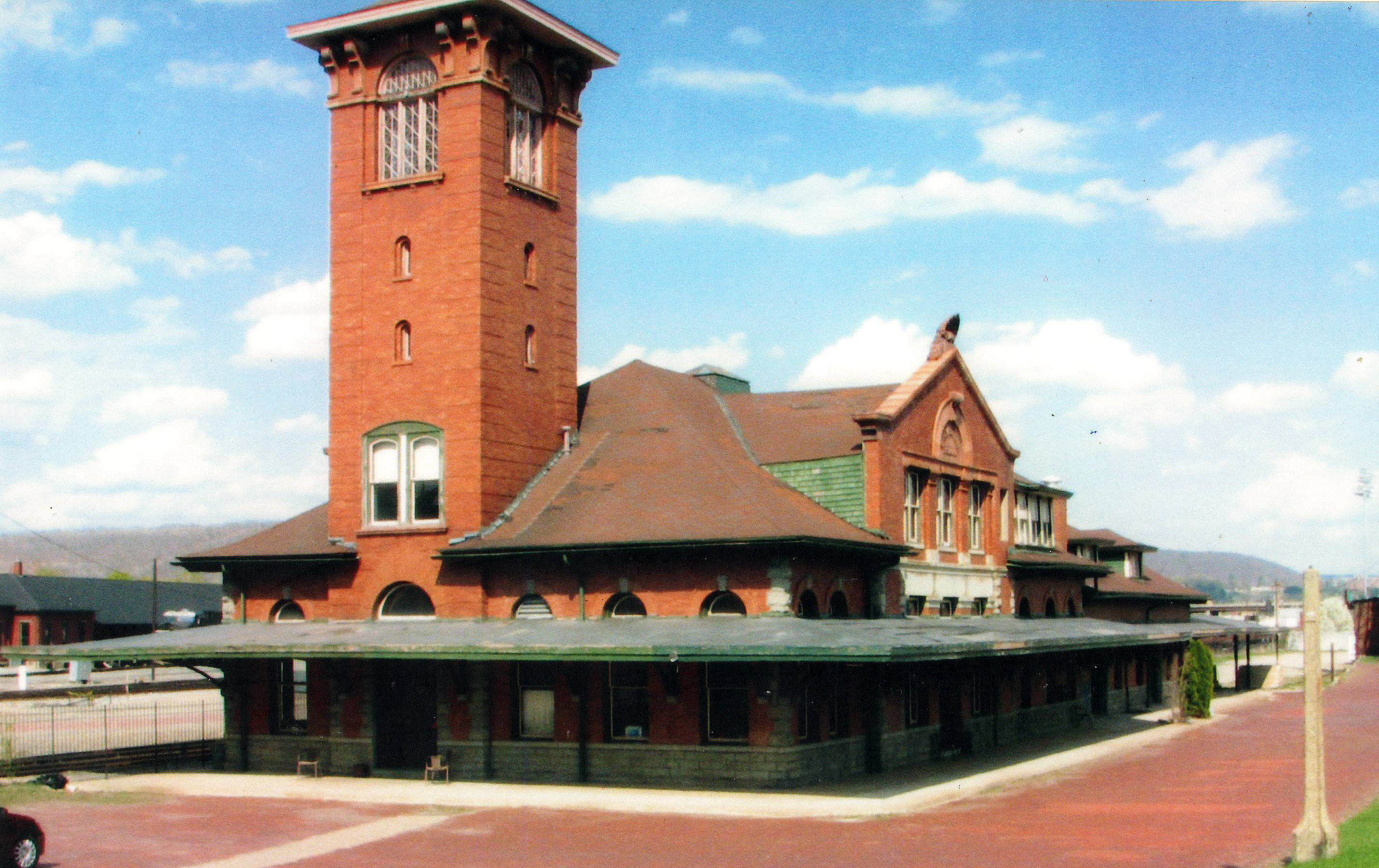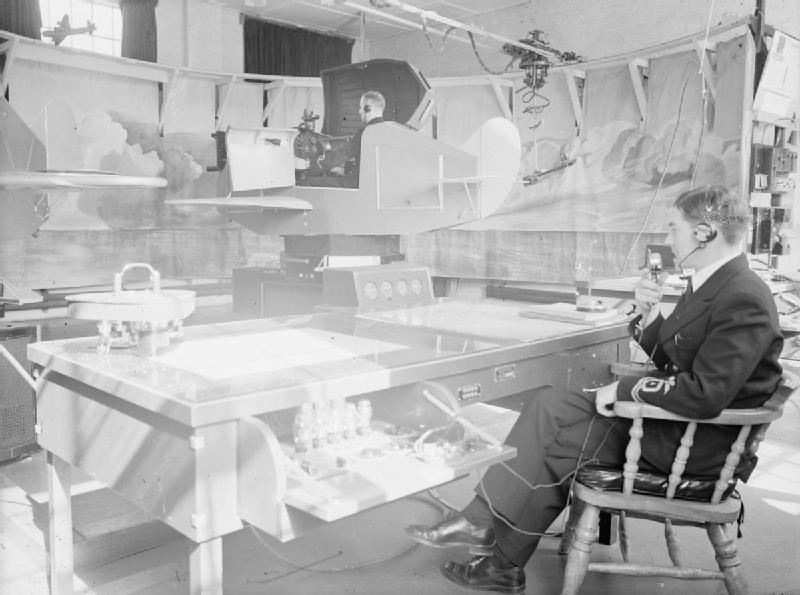|
Link Piano And Organ Company
The Link Piano and Organ Company was an American manufacturer of pianos, orchestrions, fotoplayers, and theatre organ, theatre pipe organs. During the early 1900s, George T. Link was managing a small firm named ''Shaft Brothers Piano Company'', which manufactured and sold pianos to the ''Automatic Musical Company'' of Binghamton, New York. When the Automatic Musical Company went bankrupt about a decade later, George's son, Edwin A. Link, Sr., became employed by the creditors to go to Binghamton and operate the company. The Links, with their two sons, George and Edwin Albert Link, Edwin Jr., moved from Huntington, Indiana to Binghamton that same year. Edwin Sr. was successful at turning the company around, and later purchased the company from the creditors, then changing the name to the Link Piano Company. For a period of time, the business primarily focused on making player pianos and orchestrions. The Star Theater, which was the oldest movie house in Binghamton, was the first to ... [...More Info...] [...Related Items...] OR: [Wikipedia] [Google] [Baidu] |
Piano
The piano is a stringed keyboard instrument in which the strings are struck by wooden hammers that are coated with a softer material (modern hammers are covered with dense wool felt; some early pianos used leather). It is played using a keyboard, which is a row of keys (small levers) that the performer presses down or strikes with the fingers and thumbs of both hands to cause the hammers to strike the strings. It was invented in Italy by Bartolomeo Cristofori around the year 1700. Description The word "piano" is a shortened form of ''pianoforte'', the Italian term for the early 1700s versions of the instrument, which in turn derives from ''clavicembalo col piano e forte'' (key cimbalom with quiet and loud)Pollens (1995, 238) and ''fortepiano''. The Italian musical terms ''piano'' and ''forte'' indicate "soft" and "loud" respectively, in this context referring to the variations in volume (i.e., loudness) produced in response to a pianist's touch or pressure on the keys: the grea ... [...More Info...] [...Related Items...] OR: [Wikipedia] [Google] [Baidu] |
Orchestrion
Orchestrion is a generic name for a machine that plays music and is designed to sound like an orchestra or band. Orchestrions may be operated by means of a large pinned cylinder or by a music roll and less commonly book music. The sound is usually produced by pipes, though they will be voiced differently from those found in a pipe organ, as well as percussion instruments. Many orchestrions contain a piano as well. At the Musical Museum in Brentford, London England, examples may be seen and heard of several of the instrument types described below. It is confused by some with the steam-powered calliope, which was also used to produce music on period carousels. It used steam whistles rather than organ pipes to produce its principal sounds. See also the similar fairground organ. Types of orchestrion The name "orchestrion" has also been applied to several musical instruments: Chamber organ A chamber organ, designed by Georg Joseph Vogler (''Abbé Vogler'') in 1790, incorpora ... [...More Info...] [...Related Items...] OR: [Wikipedia] [Google] [Baidu] |
Fotoplayer
The photoplayer is an automatic mechanical orchestra used by movie theatres to produce photoplay music to accompany silent films. Operation The central instruments in a photo player were a piano and percussion; some machines also added pipe organs and methods for manually creating sound effects. Like a player piano, the photo player played music automatically by reading piano rolls (rolls of paper with perforations), but the photo player could hold two rolls: one that would play while the other was prepared. Common sound effects included gunshots, bells and drums, which were generated by pulling chains called "cow-tails". Some photo players feature electric sound effects, such as sirens, automobile horns, and other oddities. A photo player operator had to load the paper rolls, start the machine and add the manual sound effects and percussion using the cow-tails. History Approximately 8,000 to 10,000 photoplayers were produced during the boom era of silent films, between 1910 ... [...More Info...] [...Related Items...] OR: [Wikipedia] [Google] [Baidu] |
Theatre Organ
A theatre organ (also known as a theater organ, or, especially in the United Kingdom, a cinema organ) is a type of pipe organ developed to accompany silent films, from the 1900s to the 1920s. Theatre organs have horseshoe-shaped arrangements of stop tabs (tongue-shaped switches) above and around the instrument's keyboards on their consoles. Theatre organ consoles were typically decorated with brightly colored stop tabs, with built-in console lighting. Organs in the UK had a common feature: large translucent surrounds extending from both sides of the console, with internal colored lighting. Theatre organs began to be installed in other venues, such as civic auditoriums, sports arenas, private residences, and churches. One of the largest theatre organs ever built was the 6 manual 52 rank Barton installed in the Chicago Stadium. There were over 7,000 such organs installed in America and elsewhere from 1915 to 1933, but fewer than 40 instruments remain in their original venues. Th ... [...More Info...] [...Related Items...] OR: [Wikipedia] [Google] [Baidu] |
Binghamton, New York
Binghamton () is a city in the U.S. state of New York, and serves as the county seat of Broome County. Surrounded by rolling hills, it lies in the state's Southern Tier region near the Pennsylvania border, in a bowl-shaped valley at the confluence of the Susquehanna and Chenango Rivers. Binghamton is the principal city and cultural center of the Binghamton metropolitan area (also known as Greater Binghamton, or historically the Triple Cities, including Endicott and Johnson City), home to a quarter million people. The city's population, according to the 2020 census, is 47,969. From the days of the railroad, Binghamton was a transportation crossroads and a manufacturing center, and has been known at different times for the production of cigars, shoes, and computers. IBM was founded nearby, and the flight simulator was invented in the city, leading to a notable concentration of electronics- and defense-oriented firms. This sustained economic prosperity earned Binghamton the mon ... [...More Info...] [...Related Items...] OR: [Wikipedia] [Google] [Baidu] |
Edwin Albert Link
Edwin Albert Link (July 26, 1904 – September 7, 1981) was an American inventor, entrepreneur and pioneer in aviation, underwater archaeology, and submersibles. He invented the flight simulator, which was called the "Blue Box" or "Link Trainer". It was commercialized in 1929, starting a now multibillion-dollar industry. In total, he obtained more than 27 patents for aeronautics, navigation and oceanographic equipment. Early life Edwin Link was born in Huntington, Indiana, in 1904, the son of Edwin A. Link, Sr., and Katherine (Martin) Link. In 1910, he moved with his family to Binghamton, New York. Aviation Aviator He took his first flying lesson in 1920. In 1927, he obtained the first Cessna airplane ever delivered and eked out a living by barnstorming, charter flying and giving lessons. As a young man, Edwin Link used apparatus from his father's automatic piano and organ factory (of the Link Piano and Organ Company) to produce an advertising airplane. A punched roll and ... [...More Info...] [...Related Items...] OR: [Wikipedia] [Google] [Baidu] |
Huntington, Indiana
Huntington, known as the "Lime City", is the largest city in and the county seat of Huntington County, Indiana, Huntington County, Indiana, United States. It is in Huntington Township, Huntington County, Indiana, Huntington and Union Township, Huntington County, Indiana, Union townships. It is also part of Fort Wayne, Indiana's metropolitan area. The population was 17,022 at the 2020 United States Census, 2020 census. Geography According to the 2010 census, Huntington has a total area of , of which (or 98.48%) is land and (or 1.52%) is water. Demographics 2010 census As of the census of 2010, there were 17,391 people, 6,566 households, and 4,197 families living in the city. The population density was . There were 7,487 housing units at an average density of . The racial makeup of the city was 96.4% White (U.S. Census), White, 0.6% African American (U.S. Census), African American, 0.4% Native American (U.S. Census), Native American, 0.5% Asian (U.S. Census), Asian, 0.6% from Ra ... [...More Info...] [...Related Items...] OR: [Wikipedia] [Google] [Baidu] |
Player Piano
A player piano (also known as a pianola) is a self-playing piano containing a pneumatic or electro-mechanical mechanism, that operates the piano action via programmed music recorded on perforated paper or metallic rolls, with more modern implementations using MIDI. The rise of the player piano grew with the rise of the mass-produced piano for the home, in the late 19th and early 20th century. Sales peaked in 1924, then declined, as the improvement in phonograph recordings due to electrical recording methods developed in the mid-1920s. The advent of electrical amplification in home music reproduction via radio in the same period helped cause their eventual decline in popularity, and the stock market crash of 1929 virtually wiped out production. History In 1896, Edwin S. Votey invented the first practical pneumatic piano player, called the Pianola. This mechanism came into widespread use in the 20th century, and was all-pneumatic, with foot-operated bellows providing a sour ... [...More Info...] [...Related Items...] OR: [Wikipedia] [Google] [Baidu] |
Ed Link
Edwin Albert Link (July 26, 1904 – September 7, 1981) was an American inventor, entrepreneur and pioneer in aviation, underwater archaeology, and submersibles. He invented the flight simulator, which was called the "Blue Box" or "Link Trainer". It was commercialized in 1929, starting a now multibillion-dollar industry. In total, he obtained more than 27 patents for aeronautics, navigation and oceanographic equipment. Early life Edwin Link was born in Huntington, Indiana, in 1904, the son of Edwin A. Link, Sr., and Katherine (Martin) Link. In 1910, he moved with his family to Binghamton, New York. Aviation Aviator He took his first flying lesson in 1920. In 1927, he obtained the first Cessna airplane ever delivered and eked out a living by barnstorming, charter flying and giving lessons. As a young man, Edwin Link used apparatus from his father's automatic piano and organ factory (of the Link Piano and Organ Company) to produce an advertising airplane. A punched roll and pn ... [...More Info...] [...Related Items...] OR: [Wikipedia] [Google] [Baidu] |
Link Trainer
The term Link Trainer, also known as the "Blue box" and "Pilot Trainer" is commonly used to refer to a series of flight simulators produced between the early 1930s and early 1950s by Link Aviation Devices, founded and headed by Ed Link Edwin Albert Link (July 26, 1904 – September 7, 1981) was an American inventor, entrepreneur and pioneer in aviation, underwater archaeology, and submersibles. He invented the flight simulator, which was called the "Blue Box" or "Link Trai ..., based on technology he pioneered in 1929 at his family's business in Binghamton, New York. During World War II, they were used as a key pilot training aid by almost every combatant nation. The original Link Trainer was created in 1929 out of the need for a safe way to teach new pilots how to fly by flight instruments, instruments. Ed Link used his knowledge of pumps, valves and bellows gained at his father's Link Piano and Organ Company to create a flight simulator that responded to the pilot's co ... [...More Info...] [...Related Items...] OR: [Wikipedia] [Google] [Baidu] |
Pipe Organ Building Companies
Pipe(s), PIPE(S) or piping may refer to: Objects * Pipe (fluid conveyance), a hollow cylinder following certain dimension rules ** Piping, the use of pipes in industry * Smoking pipe ** Tobacco pipe * Half-pipe and quarter pipe, semi-circular ramps for performing skateboarding/snowboarding tricks * Piping (sewing), tubular ornamental fabric sewn around the edge of a garment * ''For the musical instruments'', see below Music * Pipe (instrument), a traditional perforated wind instrument * Bagpipe, a class of musical instrument, aerophones using enclosed reeds ** Pipes and drums or pipe bands, composed of musicians who play the Scottish and Irish bagpipes * Organ pipe, one of the tuned resonators that produces the main sound of a pipe organ * Pan pipes, see Pan flute, an ancient musical instrument based on the principle of the stopped pipe * Piped music, or elevator music, a type of background music * "Pipe", by Christie Front Drive from ''Christie Front Drive'', 1994 Computing ... [...More Info...] [...Related Items...] OR: [Wikipedia] [Google] [Baidu] |
Defunct Manufacturing Companies Based In New York (state)
{{Disambiguation ...
Defunct (no longer in use or active) may refer to: * ''Defunct'' (video game), 2014 * Zombie process or defunct process, in Unix-like operating systems See also * * :Former entities * End-of-life product * Obsolescence Obsolescence is the state of being which occurs when an object, service, or practice is no longer maintained or required even though it may still be in good working order. It usually happens when something that is more efficient or less risky r ... [...More Info...] [...Related Items...] OR: [Wikipedia] [Google] [Baidu] |





